Links
About.com – Real Estate Investment
For decades, housing developments in the suburbs have come complete with golf courses, tennis courts, strip malls and swimming pools. But make way for the new subdivision amenity: the specialty farm. A new model for suburban development is springing up across the country that taps into the local food movement. Farms, complete with livestock, vegetables and fruit trees, are serving as a way to entice potential buyers to settle in a new subdivision.
American Institute of Architects (AIA)
AIA is a professional organization for architects in the United States. Headquartered in Washington D.C.., the AIA offers education, government advocacy, community redevelopment, and public outreach to support the architecture profession and improve its public image. The AIA also works with other members of the design and construction team to help coordinate the building industry.
American Planning Association (APA)
The American Planning Association is an independent, not-for-profit educational association organized to advance the art and science of urban and regional planning. APA and its members provide leadership by advocating excellence in community planning, promoting education and citizen empowerment, and providing the tools and support necessary to meet the challenges of growth and change.
American Society of Landscape Architects (ASLA)
ASLA’s mission is to lead, to educate and to participate in the careful stewardship, wise planning, and artful design of our cultural and natural environments
American Farmland Trust is the only national conservation organization dedicated to protecting farmland, promoting sound farming practices, and keeping farmers on the land. As the vital link among farmers, conservationists and policy-makers, we’re focused on ensuring the availability of the land that provides fresh food, a healthy environment and lasting rural landscapes. Since our founding in 1980 by a group of farmers and citizens concerned about the rapid loss of farmland to development, we’ve helped to save more than three million acres of farmland and led the way for the adoption of conservation practices on millions more. The benefits of bountiful and protected working lands represent our best bet for the future — and our plan to help America guarantee that future through comprehensive stewardship of the nation’s working lands is based on the key programs of farmland protection, keeping farmers on the land, agriculture and environment
We inspire people to plant, nurture, and celebrate trees. This is the mission statement of the Arbor Day Foundation, a 501(c)3 nonprofit conservation and education organization. Founded in 1972, the centennial of the first Arbor Day observance in the 19th century, the Foundation has grown to become the largest nonprofit membership organization dedicated to planting trees, with over one million members, supporters, and valued partners. The impact we make on our world is accomplished through our conservation and education programs.
American Association of State Highway and Transportation Officials (AASHTO) is a nonprofit, nonpartisan association representing highway and transportation departments in the 50 states, the District of Columbia, and Puerto Rico. It represents all five transportation modes: air, highways, public transportation, rail, and water. Its primary goal is to foster the development, operation, and maintenance of an integrated national transportation system. As the voice of transportation, AASHTO works to educate the public and key decision makers about the critical role that transportation plays in securing a good quality of life and sound economy for our nation. AASHTO serves as a liaison between state departments of transportation and the Federal government. AASHTO is an international leader in setting technical standards for all phases of highway system development. Standards are issued for design, construction of highways and bridges, materials, and many other technical areas. AASHTO serves as a catalyst for excellence in transportation by offering:Smart solutions and promising practices;Critical information, training and data;Direct technical assistance to states; and Unchallenged expertise.
Architects/Designers/Planners for Social Responsibility
Architects / Designers / Planners for Social Responsibility works for peace, environmental protection, ecological building, social justice, and the development of healthy communities. ADPSR programs aim to raise professional and public awareness of critical social and environmental issues, further responsive design and planning, and honor persons and organizations whose work exemplifies social responsibility.
Center for Urban and Regional Affairs
The Center for Urban and Regional Affairs (CURA) strives to be a nationally recognized model for university-community engagement. CURA is founded on the belief that partnership between the university and the community is mutually beneficial. Communities determine issues important to them, and provide an understanding of the context of these issues and the wisdom to shape how they can best be addressed to create vital places to live and work. The university contributes extensive knowledge and expertise to understand community issues and discover new approaches to address them. This model of engaged research leads to outcomes that strengthen the community and enrich academic research.
We believe that adherence to the Community Development Society’s Principles of Good Practice are essential to sound community development.Promote active and representative participation toward enabling all community members to meaningfully influence the decisions that affect their lives. Engage community members in learning about and understanding community issues, and the economic, social, environmental, political, psychological, and other impacts associated with alternative courses of action. Incorporate the diverse interests and cultures of the community in the community development process; and disengage from support of any effort that is likely to adversely affect the disadvantaged members of a community. Work actively to enhance the leadership capacity of community members, leaders, and groups within the community. Be open to using the full range of action strategies to work toward the long-term sustainability and well being of the community.
Construction Debris Management
CDM – Dedicated to the highest quality erosion control products
The community of design leaders – At the heart of the DMI is a simple idea: the more closely connected a community of design leaders, the more all of them stand to gain from their shared insights, knowledge and experience. DMI brings together design and business leaders from around the world with the goal of enhancing each member’s career and elevating the value of design.
Journal of history and natural and social sciences
American Forests, the oldest national nonprofit conservation organization in the country, advocates for the protection and expansion of America’s forests. Since 1990, we have planted more than 40 million trees. We restore watersheds to help provide clean drinking water. We replant forests destroyed by human action and by natural disasters. Our work is guided by science: choosing the right mix of trees for particular locations, the best trees to act as windbreaks or to filter water, the trees that will provide wildlife habitat, or are most suitable for city streets and parks. Our advocacy is also guided by science: keeping policymakers informed about how trees interact with climate, sequester carbon, manage water, and benefit cities. We explain that ecological services from trees and forests have real economic value. We work in and advocate for federal, state, and urban forests, and sometimes our work takes us beyond US borders.
Greenstone farm credit – Real estate
Finance farm land purchases, land contracts, farm land improvements, and agricultural structures/buildings, vacant land, recreational land, homes, and home construction in rural, small town, or suburban areas.
The Heartland Center for Leadership Development is an independent, nonprofit organization developing local leadership that responds to the challenges of the future of small towns and rural communities.
Institute of Botanical Training, LLC
The Institute of Botanical Training, LLC is an independent organization that provides comprehensive workshops for persons seeking on-the-job plant identification skills. Our classes are especially suited for professionals such as biologists, environmental consultants, foresters and naturalists.
Institute of Real Estate Development & Investment
Training and education of individuals related to real estate development and investment
Lake Restoration has been making lakes and ponds safe and clear for nearly 35 years. Thousands of homeowners and cabin owners use our products to control aquatic weeds each year. These products may be purchased through our catalog, at our retail outlet and on their web site.
Many resources related to land Development including leads, estimating, sales, research, planning and data bases.
The Michigan Green Industry Association (MGIA) is a statewide professional trade association serving the green industry for over 50 years. MGIA promotes education and certification to its members and has set high standards of professionalism and business integrity for Michigan’s green industry contractors. MGIA provides more than 800 members with the latest information on new methods, treatments and technologies that help the landscape thrive. Our members range in size and include franchise operations.
The Lincoln Institute of Land Policy is a leading resource for key issues concerning the use, regulation, and taxation of land. Providing high-quality education and research, the Institute strives to improve public dialogue and decisions about land policy. As a private operating foundation whose origins date to 1946, the Institute seeks to inform decision making through education, research, policy evaluation, demonstration projects, and the dissemination of information, policy analysis, and data through our publications, Web site, and other media. By bringing together scholars, practitioners, public officials, policy makers, journalists, and involved citizens, the Lincoln Institute integrates theory and practice and provides a nonpartisan forum for multidisciplinary perspectives on public policy concerning land, both in the U.S. and internationally..
Where buyers and sellers of residential lots and land connect for listings, networking and news.
National Association of Counties
This organization provides information on most of the 3,066 counties in the United States. information includes miscellaneous data, policies, ordinances or innovative county programs to name a few of the contents. The links section allows you to move to county homepages. The county Discussion Forum lets visitors discuss local issues. In summary; get about any information on any county in America – general or specific.
National Association of Home Builders
The OSHA and NAHB Alliance focuses on providing NAHB members and others in the residential construction industry, including non-English and limited English speaking workers and trade contractors, with information, guidance, and access to training resources that will help them protect the health and safety of workers. Through the Alliance, the organizations will continue to address fall, electrical, struck-by, and caught in/between nal safety hazards. The Alliance’s goals include training and education, outreach and communication, promoting the national dialogue on workplace safety and health, and noting milestones and successes.
NDC is the oldest national non-profit community development organization in the U.S. We’ve evolved a lot since our founding in 1969, but our mission — increasing the flow of capital to under served urban and rural areas for job creation and community development — remains the same. We offer our community partners development assistance and professional training as well as small business financing and debt and equity for residential, commercial, public and non-profit facilities projects.
National Trust for Historic Preservation
The National Trust frequently turns to grassroots supporters to help effect change at the local, state, and federal level. This includes advocating for preservation funding, saving historic places and influencing key legislation that protects our country’s heritage.
Next City is a non-profit organization dedicated to connecting cities and informing the people who work to improve them. Originally named The Next American City, the organization began publishing a quarterly magazine in 2003. What started as a black-and-white printed publication staffed by volunteers ultimately grew into a popular and influential magazine that reached 1 million people over the course of its 31 issues. It spawned a popular website, local events in cities around the country, and the Next American Vanguard and Open Cities conferences.In the beginning of 2012, Next American City announced that it would cease publication of the magazine; at the end of the year, the organization expanded its international content and was renamed Next City.
Focused on Energy Efficient Building and Environmentally Sound Construction. The Oikos® site is devoted to serving professionals whose work promotes sustainable design and construction. That’s a broad goal, but then environmental sustainability touches virtually every aspect of a building. Oikos is a Greek word meaning house. Oikos serves as the root for two English words: ecology and economy. That may seem contradictory at first, but it makes perfect sense. Ecology is the science of interactions in natural communities. It examines the web of life where plants, animals, rocks and gases all affect one another. Healthy communities, healthy ecosystems exist in a dynamic equilibrium of nutrient cycles and energy flows. Humans may make massive modifications to their habitats, but we will never remove ourselves from the community. Economy means thrift and sound management of community resources. What we now call the “Economy” is hardly economical, because it is based on the consumption of natural capital and rampant waste. Economy and ecology are closely linked. Indeed, they will need to be threads of the same fabric if humans are to change direction and become more productive members of the community of Earth.
The latest plant hardiness zones map from USDA
Project for Public Spaces (PPS) is a nonprofit planning, design and educational organization dedicated to helping people create and sustain public spaces that build stronger communities. Our pioneering place making approach helps citizens transform their public spaces into vital places that highlight local assets, spur rejuvenation and serve common needs. PPS was founded in 1975 to expand on the work of William (Holly) Whyte, the author of The Social Life of Small Urban Places. Since then, we have completed projects in over 2500 communities in 40 countries and all 50 US states. Partnering with public and private organizations, federal, state and municipal agencies, business improvement districts, neighborhood associations and other civic groups, we improve communities by fostering successful public spaces.
RMI’s vision is a world thriving, verdant, and secure, for all, for ever. Our mission is to drive the efficient and restorative use of resources. Application in the Real World RMI’s style is non-adversarial and trans-ideological, emphasizing integrative design, advanced technologies, and mindful markets. Our strategic focus, executed through specific initiatives designed to take our work rapidly to scale, is to map and drive the transition from coal and oil to efficiency and renewables.
We work extensively with the private sector, as well as with civil society and government, to create abundance by design and to apply the framework of natural capitalism.
Rutgers Planning and Zoning Center
Continuing education programs organized by the Center increase the technical competence of state and local government personnel in New Jersey while fostering an attitude of professionalism among public sector officials and employees. More than 600 courses and seminars are offered each year, with annual enrollments of more than 20,000 participants. These programs are generally taught by state and local government professionals and other experts who receive instructor training through the Center. Most classes are run throughout the state on an open-enrollment basis. However, on-site programs can be developed for individual local governments upon request. For an overview of the Program areas see site…
Scenic America preserves and enhances the visual character of America. The only national nonprofit that helps citizens safeguard the scenic qualities of America’s roadways, countryside and communities.
The Institute for Small Town Studies, is a 501(c)(3) educational non-profit corporation founded in Fairfield, Iowa in 2003. We provide community design assistance and small town planning services, pursue historic preservation and develop educational programs based on small town themes.We are striving to become a valuable resource for small towns and for those who study them. For too long, the study of small towns has taken place in remote locations, by disparate voices, at best loosely organized, with marginal resources and means. At ISTS, we are working to bring these efforts together. We are building a library and small town archives. We publish a quarterly journal, called Fishwrap, We also host an annual Small Town Symposium for scholars and citizens to share their research and resources.
THIS IS APPROPRIATE REGARDLESS OF LOCATION ALTHOUGH IT FOCUSES ON THE MISSISSIPPI REGION – Smart, sustainable coastal growth creates close-knit communities that benefit from their natural surroundings. By discouraging sprawl and producing compact, walkable neighborhoods, cities can meet the growing desire of homeowners and businesses to invest in both a property and its place in the environment. Coastal areas will find solutions in this Toolbox to achieve a unique sense of community; expand the range of transportation, employment, and housing choices; equitably distribute the costs and benefits of development; preserve and enhance natural and cultural resources; and increase resiliency to natural hazards.
The society of Wetland professionals (SWS), an international organization of about 3,500 members dedicated to fostering sound wetland science, education, and management. It puts at your fingertips the latest research, access to the smartest people in the wetlands business, and links to the most interesting developments.
Sustainable Land Development International
Sustainable Land Development International is a member-owned organization dedicated to promoting land development around the world that balances the needs of people, planet and profit – for today and future generations. Members include land developers, builders, civil engineers, landscape architects, land planners, architects, arborists, construction contractors, real estate brokers, attorneys, financial consultants, investors, government representatives, educators, students, product/service providers, and other stakeholders in land development. SLID is dedicated to helping land development stakeholders leverage the knowledge, skills, relationships and technologies to differentiate their professional efforts from others in the industry, while connecting them with like-minded leaders and organizations that help them effectively enhance the quality of their work, and that of the industry, to deliver greater and more lasting value for civilization.
Sustainable Sites Initiative, The
The Sustainable Sites Initiative (SITES™) was created to promote sustainable land development and management practices that can apply to sites with and without buildings including, but not limited to the Open spaces such as local, state and national parks, conservation easements and buffer zones and transportation rights-of-way and Sites with buildings including industrial, retail and office parks, military complexes, airports, botanical gardens, streetscapes and plazas, residential and commercial developments and public and private campuses. SITES will provide tools for those who influence land development and management practices and can address increasingly urgent global concerns such as climate change, loss of biodiversity, and resource depletion. They can be used by those who design, construct, operate and maintain landscapes, including but not limited to planners, landscape architects, engineers, developers, builders, maintenance crews, horticulturists, governments, land stewards and organizations offering building standards.
International Review of landscape Architecture and Urban Design. Topos is the definitive international publication about landscape architecture and urban design. Launched in 1992, the magazine rose quickly to prominence, and is an influential voice in the discussion of the built environment.
U.S.Environmental Protection Agency (EPA)
EPA efforts in the area of sustainability practices and approaches include labeling green products and promoting green chemistry and engineering, managing materials rather than creating waste, using green infrastructure to manage storm water runoff, and supporting the sustainable design of communities.
U.S. Green Building Council (LEED)
Together with our national staff, USGBC advocacy volunteers work to provide policymakers and community leaders with the tools they need to take leadership positions, foster innovation and inspire action toward a greener, healthier tomorrow. Members of USGBC’s volunteer community are heavily engaged in advocacy activities that facilitate growth and progress for sustainability through sound public policy. USGBC chapters organize the growing community of green building advocates. They play a critical and influential role in supporting lawmakers at all levels of government as they consider how to tap the sustainability potential of green buildings and communities. Whether young or old, student or experienced professional, or simply a concerned citizen, there are opportunities for you to get involved in driving public policy that enables a truly sustainable future.
Anything related to plants, places and people
U.S. Dept of Housing and Urban Development
Anything related to housing and urban development
The mission of the Urban Land Institute is to provide leadership in the responsible use of land and in creating and sustaining thriving communities worldwide. ULI is committed to Bringing together leaders from across the fields of real estate and land use policy to exchange best practices and serve community needs,Fostering collaboration within and beyond ULI’s membership through mentoring, dialogue, and problem solving,Exploring issues of urbanization, conservation, regeneration, land use, capital formation, and sustainable,development,Advancing land use policies and design practices that respect the uniqueness of both the built and natural environments,Sharing knowledge through education, applied research, publishing, and electronic media; and sustaining a diverse global network of local practice and advisory efforts that address current and future challenges.
Those who live and work in northern cities recognize the need for better planning and design. The sustainability of winter cities requires a creative approach that addresses the problems of snow and cold while enhancing the advantages, opportunities and beauty of the winter season. A positive approach benefits the attitudes of residents, and bolsters the community’s ability to attract new business and residents. The Winter Cities Institute was organized in 2008 to identify, promote and share the positive attributes of winter living, new concepts in architecture and urban design, and success stories from those places that are thriving in the north. The Institute was founded by Patrick Coleman, AICP, recognized for his work with the Livable Winter Cities Association (WCA). From 1982-2005, the WCA organized conferences, published books and the quarterly magazine “Winter Cities”. A totally volunteer staff made the WCA difficult to sustain and in the end it struggled with its mission. As Coleman incorporated winter enhancement strategies in his planning practice with multidisciplinary design firms in Alaska and northern Michigan, he found enthusiastic reception to the idea of making winter a better time of year. “People are looking for answers to common winter problems and issues”, he said. “I experienced firsthand and heard from many the need for a source of information, networking and resources, and decided to launch the Institute as a web-based network and resource sharing project”. The Winter Cites Institute offers a place for those looking to improve the quality of life in wintertime and need information on what is being done in other northern places.

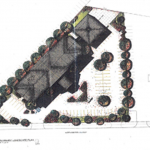
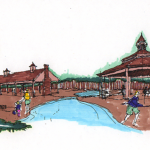
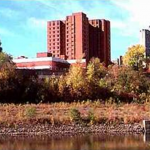
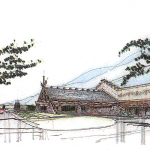
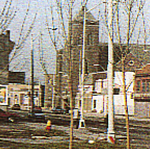
Connect
Connect with us on the following social media platforms.